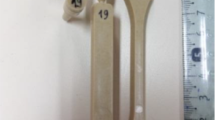Abstract
OSB panels were manufactured with a mixture of pine and cypress heartwood and lignin and tannin based resins in order to propose an eco-friendly wood composite. The resistance of OSB panels against Reticulitermes santonensis was tested according to EN 118 and EN 117 as well as in a field test. OSB made from cypress showed more resistance against the tested termite, the resistance decreased as the percentage of pine increased. The degree of attack differed according to the choice of standard procedure. The field test results revealed that in outdoor conditions and when the termites had a feeding choice, all mixtures showed the same behaviour. The decay resistance was assessed according to EN 12038, and the results revealed that the resistance increases when the percentage of cypress increases.
Zusammenfassung
Aus einer Mischung aus Kiefern- und Zypressenkernholz sowie Harzen auf Lignin- und Tanninbasis wurden OSB-Platten als umweltfreundlicher Holzwerkstoff hergestellt. Die Resistenz dieser OSB-Platten gegen Reticulitermes santonensis wurde gemäß EN 118 und EN 117 sowie in einem Feldversuch untersucht. Aus Zypressenholz hergestellte OSB-Platten wiesen eine höhere Resistenz gegen diese Termitenart auf. Diese nahm mit zunehmendem Kiefernholzanteil ab. Dabei hing die Höhe des Befalls vom gewählten Prüfverfahren ab. Die Ergebnisse des Feldversuchs zeigten, dass sich alle Mischungen unter Freilandbedingungen bei gegebenem Termitenbefall gleich verhielten. Die Resistenz wurde darüber hinaus gemäß EN 12038 bestimmt. Dabei zeigten die Ergebnisse, dass die Resistenz mit zunehmendem Anteil an Zypressenholz zunimmt.
Similar content being viewed by others
References
AFNOR (2003) EN 12038 Durability of wood and wood-based products – Wood-based panels – Method of test for determining the resistance against wood-destroying basidiomycetesr
AFNOR (2005a) EN 117 – Wood preservatives – Determination of toxic values against Reticulitermes species (European termites) (Laboratory method)
AFNOR (2005b) EN 118 – Wood preservatives – Determination of preventive action against Reticulitermes species (European termites) (Laboratory method)
Ballerini A, Despres A, Pizzi A (2005) Non-toxic, zero-emission tannin-glyoxal adhesives for wood panels. Holz Roh- Werkst 63(6):477–478
Behr EA (1972) Decay and termite resistance of medium density fibreboards made from wood residue. For Prod J 22(12):48–51
Despres A, Pizzi A, Delmotte D (2006) 3C NMR investigation of the reaction in water of UF resins with blocked emulsified isocyanates. J Appl Poly Sci 99(2):589–596
Evans PD, Dimitriade S, Cunningham RB, Donnelly CF (2000) Medium density fibreboard manufactured from blends of white cypress pine and non-durable wood species shows increased resistance to attack by subterranean Coptotermes lacteus. Holz 54(6):585–590
Gardner DJ, Tascioglu C, Walindern ME (2003) Wood composite protection. Wood deterioration and preservation. In: Godell B, Nicholas DD, Schultz TP (eds) Advances in our changing world. Washington DC, pp 399–419
Garnier S, Pizzi A, Vorster O, Halasz L (2002) Rheology of polyflavonoid tannin-formaldehyde reactions before and after gelling – Part 2: Hardener influence and comparison of different tannins. J Appl Poly Sci 84(4):864–871
Haluk JP, Roussel C (2000) Characterization and origin of tropolones responsible for the cupressales natural durability. Potential application to wood preservation (in French). Ann For Sci 57(8):819–829
Kamdem P, Sean ST (1994) The durability of phenolic-bonded particleboards made from decay resistant black locust and nondurable aspen. For Prod J 44(2):65–68
Kartal SN, Green III F (2003) Decay and termite resistance of medium density fibreboard (MDF) made from different wood species. Intern Biodeterior 51:29–35
Kirkpatrick JW, Barnes HM (2006) Biocide treatments for wood composites – A review. The International Research Group on Wood Preservation. Norway, Document No. IRG/WP 06-40323, p 21
Lei H, Pizzi A, Du G (2007) Environment-friendly, mixed tannin/lignin wood resins. J Appl Poly Sci 107(1):203–209
Mansouri NE, Pizzi A, Salvado J (2007) Lignin-based wood panel adhesives without formaldehyde. Holz Roh- Werkst 65(1):65-70
Morita Y, Matsumara E, Okabe T, Shibata M, Ohe T, Tsujibo H, Ishida N, Inamori Y (2003) Biological activity of tropolone. Biol Pharm Bul 26(10):487–1490
Muin M, Tsunoda K (2003) Termicidal performance of wood based composites treated with silafluofen using supercritical carbon dioxide. Holz 57(6):585–592
Okoro SP, Gertjejansen R, French D (1984) Influence of natural durability, laboratory weathering resin content, and ammoniacal copper arsenate treatment on the decay resistance of African hardwood particleboards. For Prod J 34(9):41–48
Savory JG (1969) Testing the fungus resistance of board materials. Materd Organism Suppl 2:49–56
Wan H, Wang XM, Yang DQ (2007) Utilizing eastern white Cedar to improve the resistance of strand boards to mould and decay fungi. For Prod J 57(3):54–59
Wieland S, Pizzi A, Hill C, Grigsby W, Pichelin T (2006). The reaction in water of UF resins with isocyanates at short curing times: a 13C NMR investigation. J Appl Poly Sci 100 (2):1624–1632
Yalinkilic MK, Immamura Y, Takahashi M, Kakaycioglu H, Dermici GN, Ozdemir T (1998) Biological, physical and mechanical properties of particleboards manufactured from waste leaves. Inter Bioterioration 41:75–84
Zavarin E, Smith RM, Anderson AB (1959a) Characterisation of Cupressaceae tropolone as diclohexylamine salts. J Org Chem 24:1584–1585
Zavarin E, Smith RM, Anderson AB (1959b) Paper chromatography of tropolones of Cupressaceae II. J Org Chem 24:1318–1321
Author information
Authors and Affiliations
Corresponding author
Rights and permissions
About this article
Cite this article
Amusant, N., Arnould, O., Pizzi, A. et al. Biological properties of an OSB eco-product manufactured from a mixture of durable and non durable species and natural resins . Eur. J. Wood Prod. 67, 439–447 (2009). https://doi.org/10.1007/s00107-009-0335-z
Received:
Published:
Issue Date:
DOI: https://doi.org/10.1007/s00107-009-0335-z




